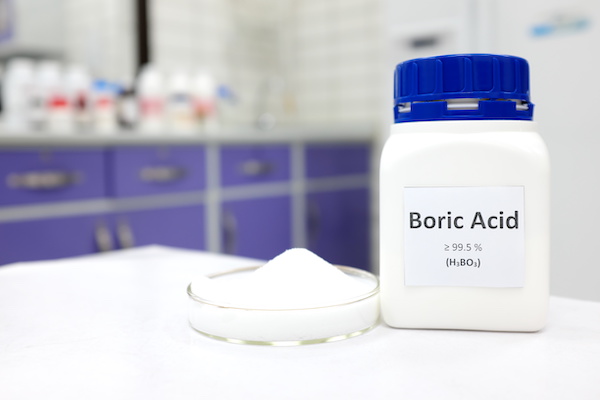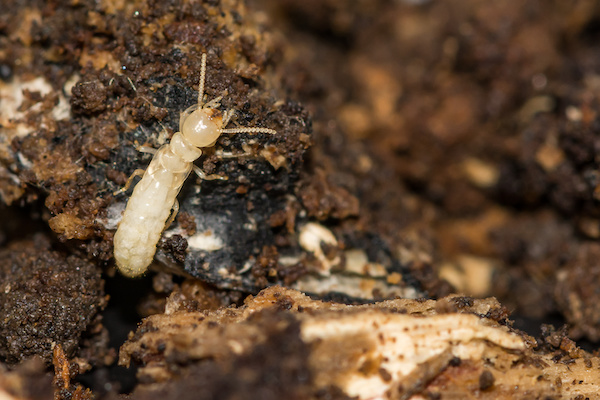
Homeowners facing termite infestations often seek effective and practical solutions. Boric acid is a common DIY pest control solution, a staple on many hardware store shelves.
In this blog post, we will explore boric acid for termites, including its benefits and limitations. Termite damage can be extensive and costly, so making an informed decision about how to deal with these destructive pests is crucial for homeowners looking to safeguard their homes.
Before you take matters into your own hands, let’s uncover the facts about boric acid’s role in termite management and whether it’s the right choice for safeguarding your home.
Boric Acid Explained
Homeowners commonly use boric acid to eliminate household pests like ants, roaches, and silverfish. When these critters come into contact with boric acid, the powdery substance dries out their outer shells and causes them to dehydrate.
Besides pest control, boric acid is a go-to solution for mold and fungus problems. It’s convenient in areas prone to dampness and mold growth, like bathrooms and basements. Boric acid also preserves wood, preventing decay and extending its lifespan. Applying it as a preventive measure saves money while keeping wood surfaces in good condition.
It is also useful as an antiseptic for cuts and burns or an antifungal treatment for athlete’s foot. It’s a gentle but effective solution for personal care and cleaning.
Plus, it’s great for tackling stains and odors, which is why you’ll find it in many commercial cleaning products. Whether dealing with stubborn stains or lingering smells, boric acid can be your secret weapon. In industry, boric acid is commonly used in producing glass and ceramics due to its versatility and low toxicity.
To get the most out of boric acid and avoid potential risks, follow the product instructions carefully and seek professional advice for pest control or medical concerns.
Using Boric Acid for Termites
Termites are destructive pests that can cause significant damage to wooden structures in and around homes. Here’s how you can use boric acid for termite control:
Boric Acid Treatment for Wood:
- One standard method is to create a boric acid solution by dissolving it in water. Mix about 1.5 pounds (700 grams) of boric acid with a gallon of water to make a concentrated solution.
- Apply the solution to the exposed, untreated wood surface susceptible to termite infestation. You can use a paintbrush or spray the solution directly onto the wood.
- Allow the wood to absorb the solution and let it dry. The wood absorbs boric acid and remains effective as a long-term termite deterrent.
Termite Baits:
- Boric acid can also be used in combination with cellulose-based bait stations. Termites are attracted to these baits, which are laced with boric acid.
- When termites feed on the bait, they ingest the boric acid, which disrupts their digestive system and eventually kills them.
- Pest control professionals often use boric acid for termites to target colonies.
Prevention:
- Boric acid can be used preventively by applying it to wooden structures before they are installed or treating existing structures susceptible to termite infestation.
- Ensure the boric acid is applied evenly and thoroughly to all susceptible wood surfaces.
- It’s important to note that while boric acid is effective against termites, it may not provide immediate results. Termite control with boric acid is generally considered a long-term strategy.
It is advisable to consult with a professional pest control service for severe termite infestations, as they can assess the extent of the problem and implement more comprehensive termite management strategies.
Limitations of Using Boric Acid for Termites
Boric acid for termites is unsuitable for severe infestations. While it slowly disrupts the termite’s digestive system, visible results may take time.
Furthermore, boric acid’s effectiveness is limited in terms of coverage. It typically requires direct application to wood surfaces or use within termite bait stations. This means it may not effectively address termites that have infiltrated the structure or those hidden within walls, floors, or other inaccessible areas.
Boric acid’s effectiveness in eliminating termites varies by species. It is most useful against dry wood termites that infest small isolated items but is less effective against subterranean termites that live in soil and build mud tunnels. In complex infestations involving multiple colonies or nests, boric acid for termites may not suffice alone.
In Raleigh, North Carolina, the most prominent and common types of termites are typically subterranean termites. These termites, including Eastern subterranean termites and Formosan subterranean termites, thrive in the region’s humid and subtropical climate. Subterranean termites are particularly destructive and are responsible for the majority of termite damage in the area.

Maintenance and reapplication are often necessary with boric acid treatments, especially in outdoor applications where exposure to the elements can break down the treatment over time. Homeowners must be prepared for ongoing maintenance to ensure continued effectiveness when relying on boric acid for termites.
Trust Innovative Pest Solutions for comprehensive and effective termite treatments. Our highly trained technicians will assess the extent of your infestation, identify the species involved, and tailor a customized treatment plan to eliminate termites from your property.
Don’t leave your most valuable investment to chance—trust Innovative Pest Solutions for superior termite protection in Raleigh, North Carolina. Contact us today to schedule an inspection and take the first step towards a termite-free future.





